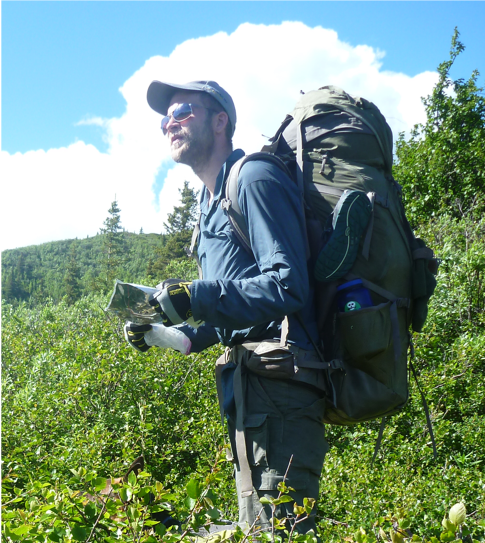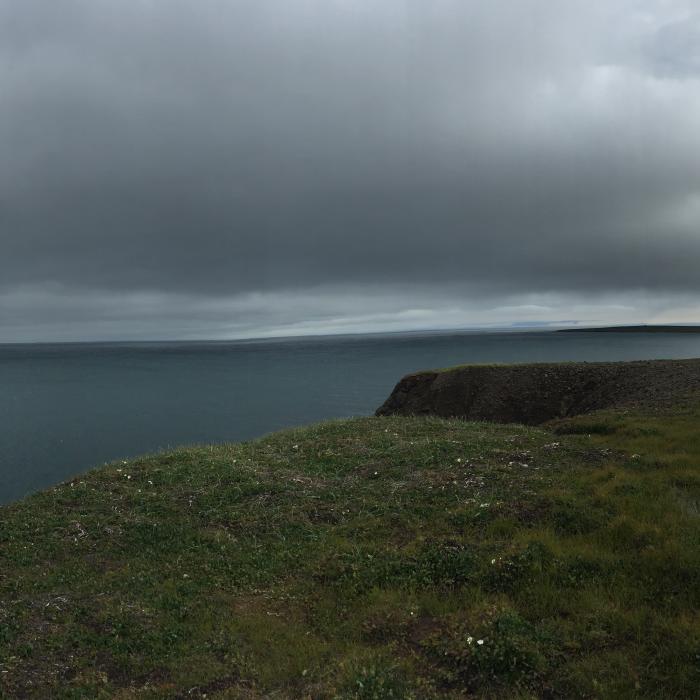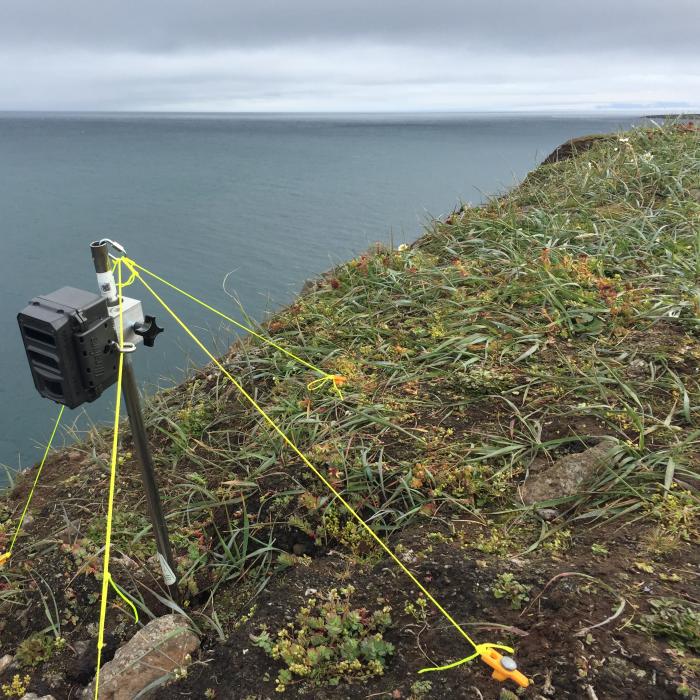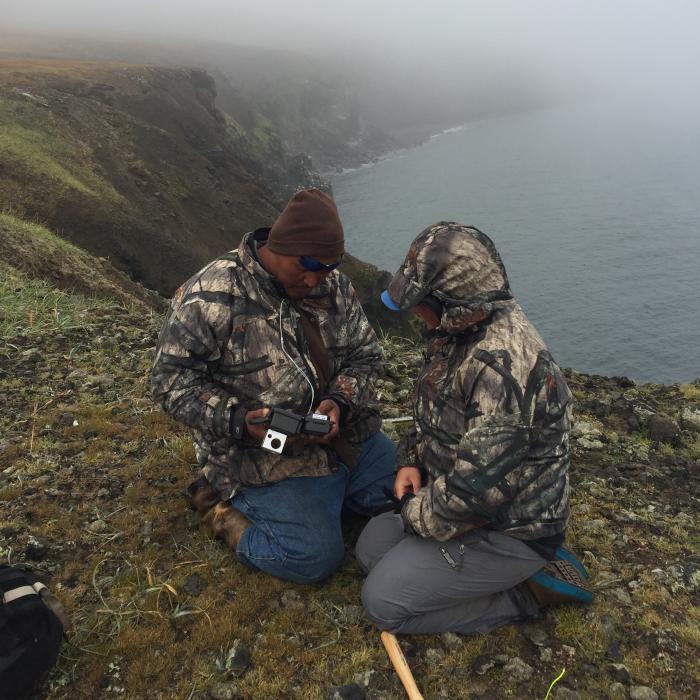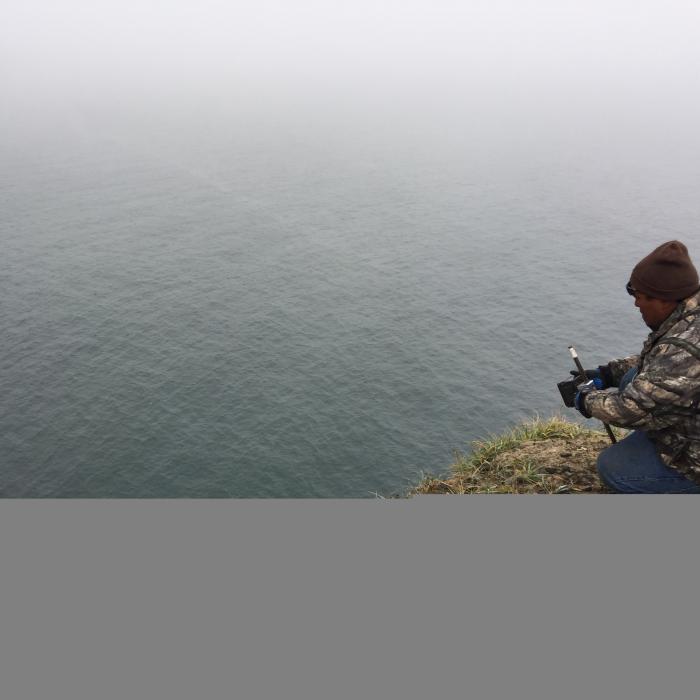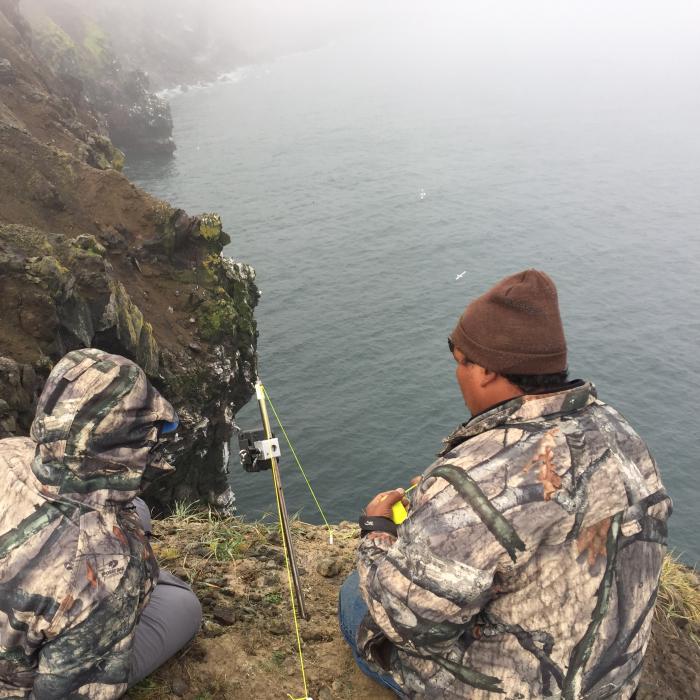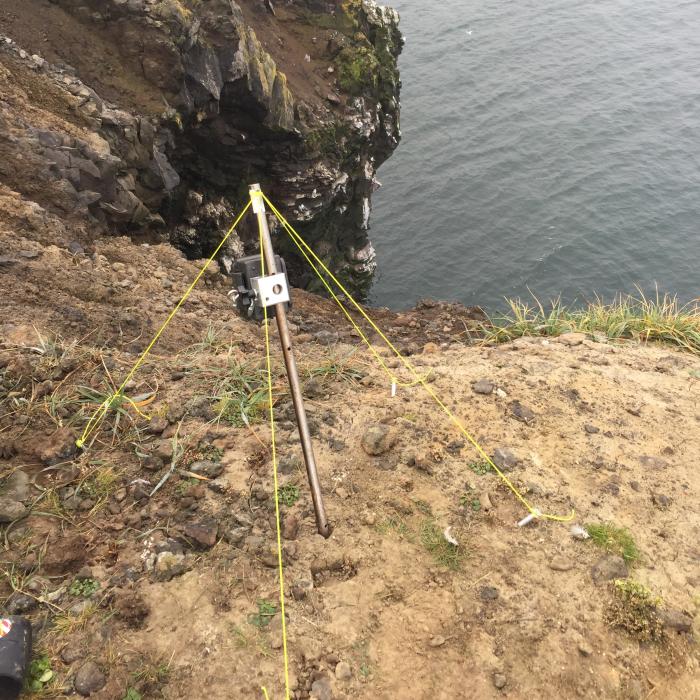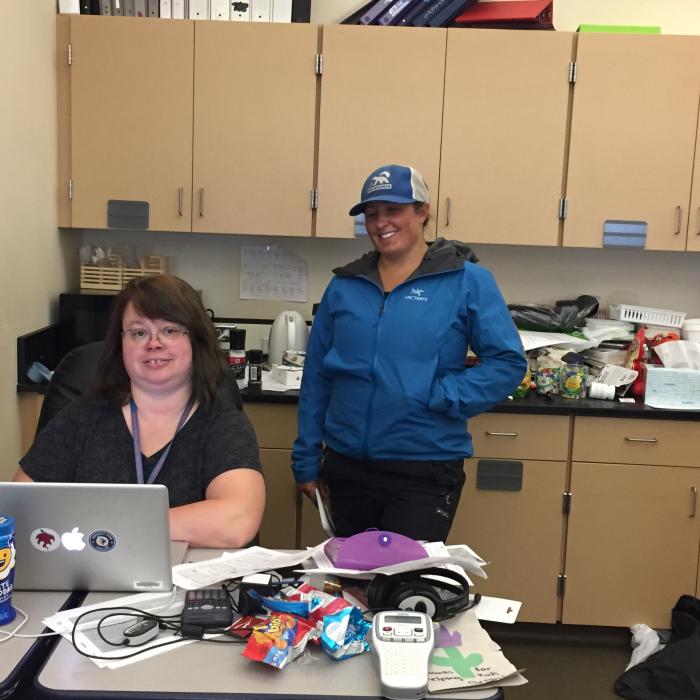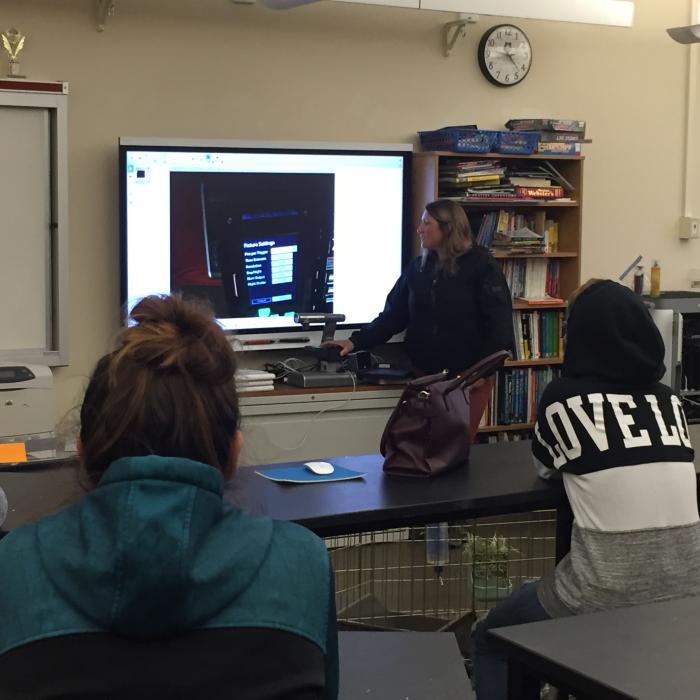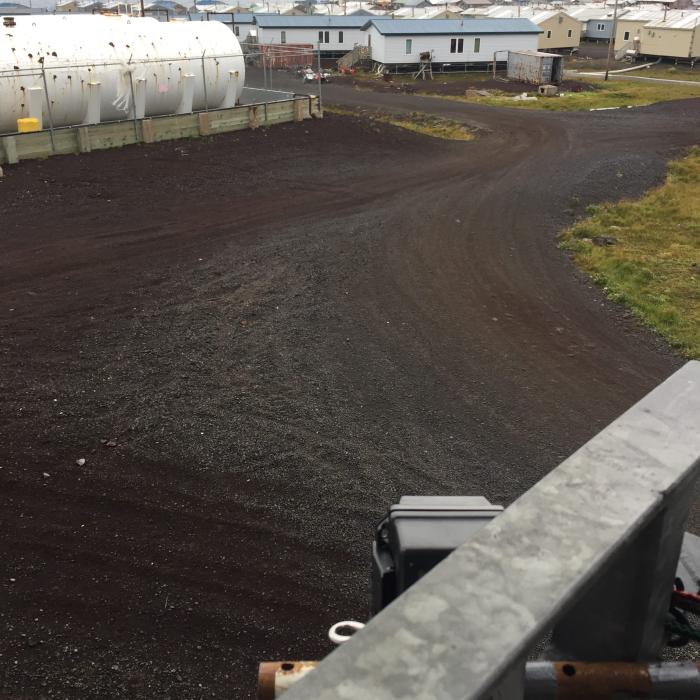Project Updates
12 July 2019
The 2019 St. Lawrence Island seabird field season has started! We put the cameras up on June 30th, just after murres peaked in their egg laying on the study plots at Kiveepuk. This year we're trying a new design for mounting the cameras to reduce any lateral movement caused by the wind (the soil at the top of the cliffs is quite loose). The mount consists of two sections of steel pipe connected with an inner sleeve and two metal brackets attached to the sides to act as soil "fins". The assembly is entirely collapsible to make transportation to the island by plane, and to the study site by ATV easy. Of course, no design is without its flaws, and this year's camera mounting required some last-minute trouble shooting when we discovered that driving the pipe into the ground had severely deformed the top, making it impossible to slide the camera on.
This year marks our second year of our pilot study/proof of concept. Last summer we verified that the game cameras have a high enough resolution to track nests. However, there were no chicks successfully fledged from the camera plots last year. This year we hope to verify that the camera resolution is good enough to identify successful nests. But, we don't have to wait until the end of the season to find ways to improve our methods. Already this year we have learned that we need to redesign our method of setting the angle of the camera mounts. One camera captures only half of the plot and may need to be readjusted in late July depending on how many nests are in the photo later in the incubation period. The new mounts are very secure and readjustments after driving them into the ground are not possible. This year we will continue to count the study plots manually to compare human vs computer estimation of reproductive success.
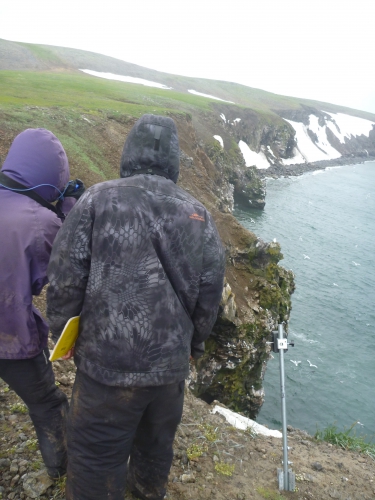
Japanese researcher Akinori Takahashi and Savoonga resident Michael Toolie count Plot 8 as the camera stands by, beginning its season-long task of taking one picture every hour.
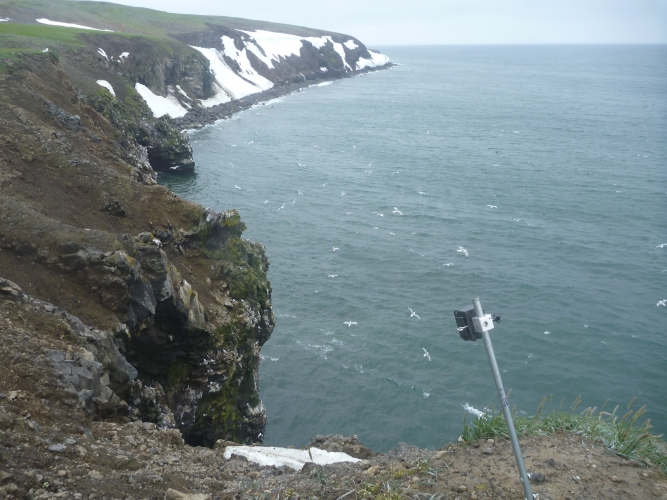
Reduced sea ice is hard on these seabird bluffs. High snow fall and increased wave action has eroded the cliffs rapidly, and some observation points have completely disappeared. For this reason hope of a permanent mount for the cameras is low, and the final design and installation process will need to be removable at the end of each season, and reproducible at each season's start.
11 September 2018
The Savoonga Murre Monitoring Project completed the classroom portion of its pilot year this month. For the first lesson they had the students model being murres to teach them how the image analysis works. The timelapse video shows students modeling both breeding (sitting on basketball eggs) and non-breeding (wandering around) behaviors.
[video:]
The compiled image is all of the images that make up the photo stacked on top of each other and the pixels are averaged. This makes it so breeders (birds/people) that are still show up, but all the noise of moving non-breeders is removed.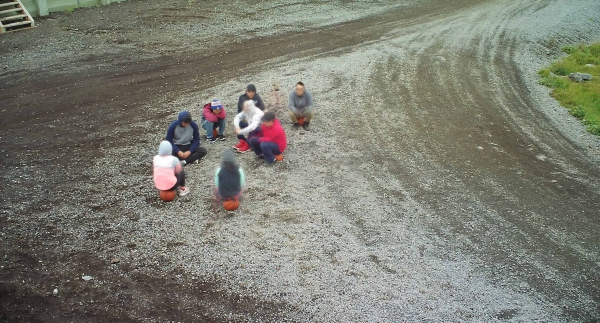
Following this exercise to learn the technology, the same methods can be applied to nesting murres. Here is a video of nesting murres from mid to late July.
[video:]
And the resulting composite images with nests circled in red...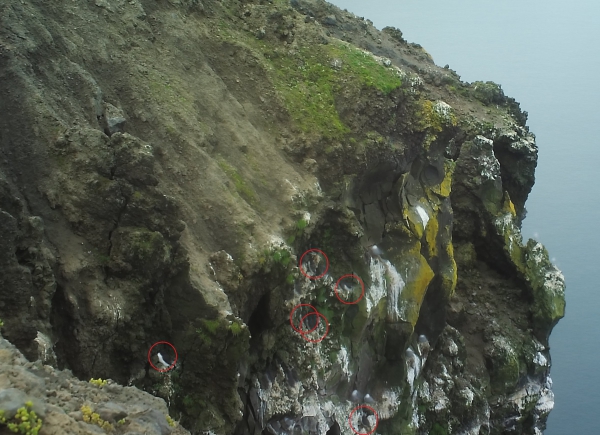
So the end result is an image of murre nests as an indicator of nesting success with all the confusion of non-breeding birds removed!
26 July 2018
Time-lapse images of nesting murres and kittiwakes near Savoonga.
[video:]
Overview
Murres are a culturally important food source for people in Savoonga. During the spring, hunters harvest adult murres as they return to their breeding colonies and collect their eggs when they first lay them. After this initial burst of activity, the murres are left alone for the rest of the summer. We will install time-lapse cameras which will track the breeding success of murres. The images will be analyzed by high school students and the results will be reported locally to the Tribal Council and Native Corporation, and also internationally to the seabird working group (CBird) of the Conservation of Arctic Flora and Fauna, the biodiversity working group of the Arctic Council. The implementation of this project is particularly timely as there was a die-off of murres in June of this year (2018). Few birds have returned to the colonies, and even fewer have laid eggs. This follows an abnormally early breeding season in 2017. This project will give the community of Savoonga a way to monitor their murre colonies and will provide an interactive and meaningful scientific learning experience to Savoonga high school students.
Community Partners
Michael Toolie, Local Expert, Savoonga, Alaska
Mylon Kingeekuk, Camera Maintainer 2018, Savoonga, Alaska
Punguk Shoogukruk, Camera Maintainer 2018, Savoonga, Alaska
Project Location
Project Products
Dates
-Location
Savoonga, AlaskaMembers
Lead Scientist
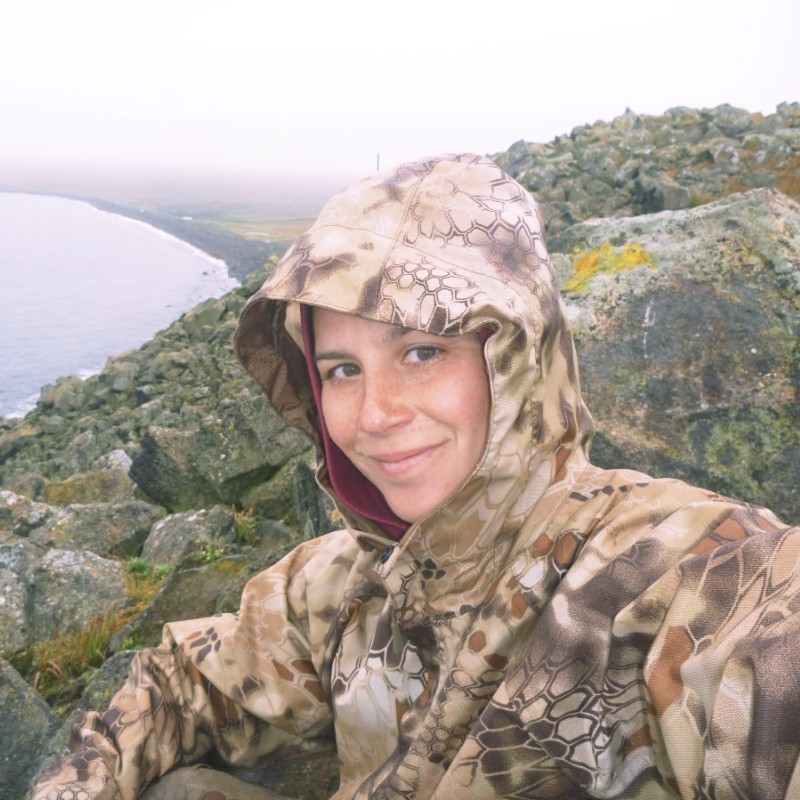
Lead Teacher
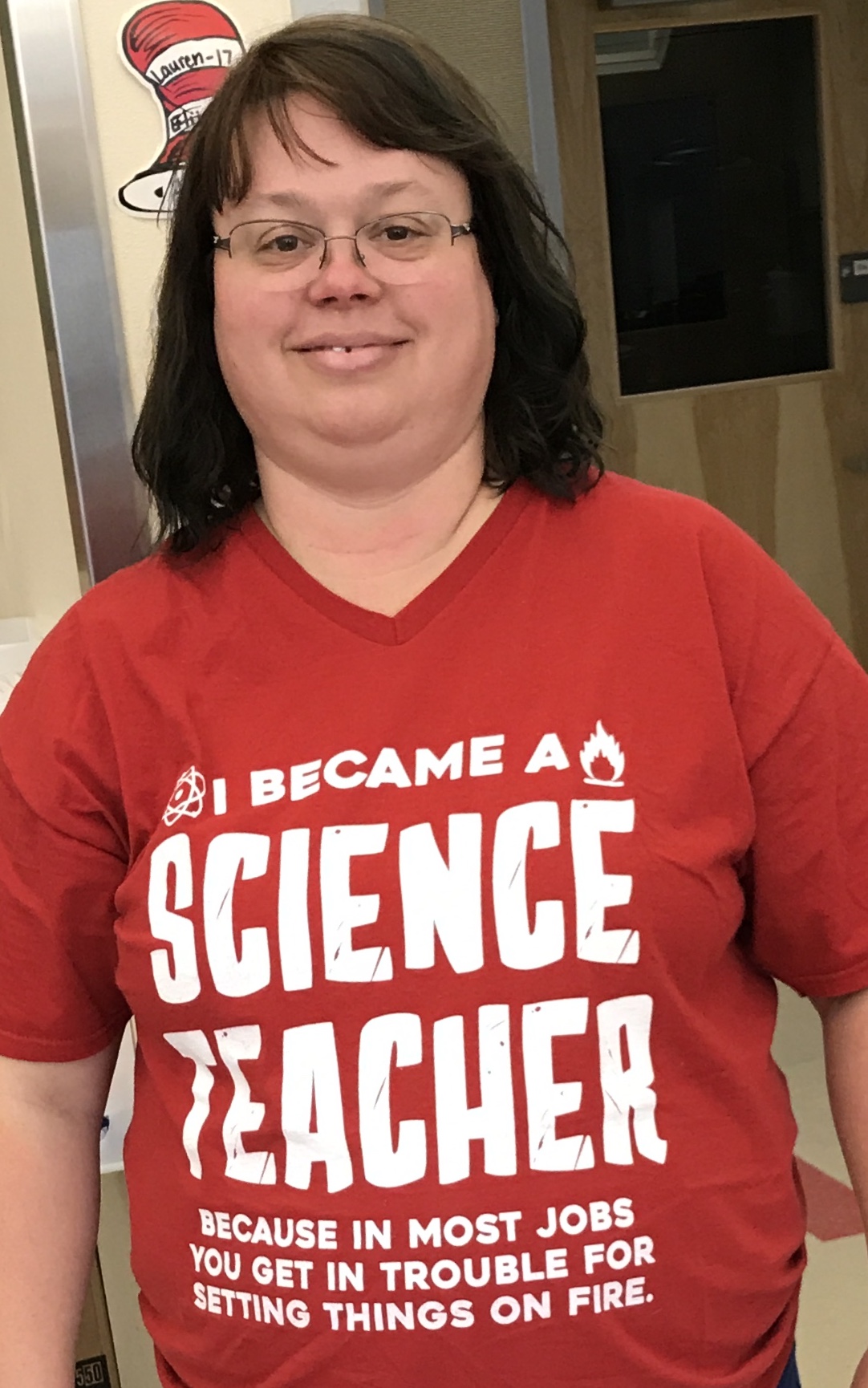
Biologist, statistician, and camera expert
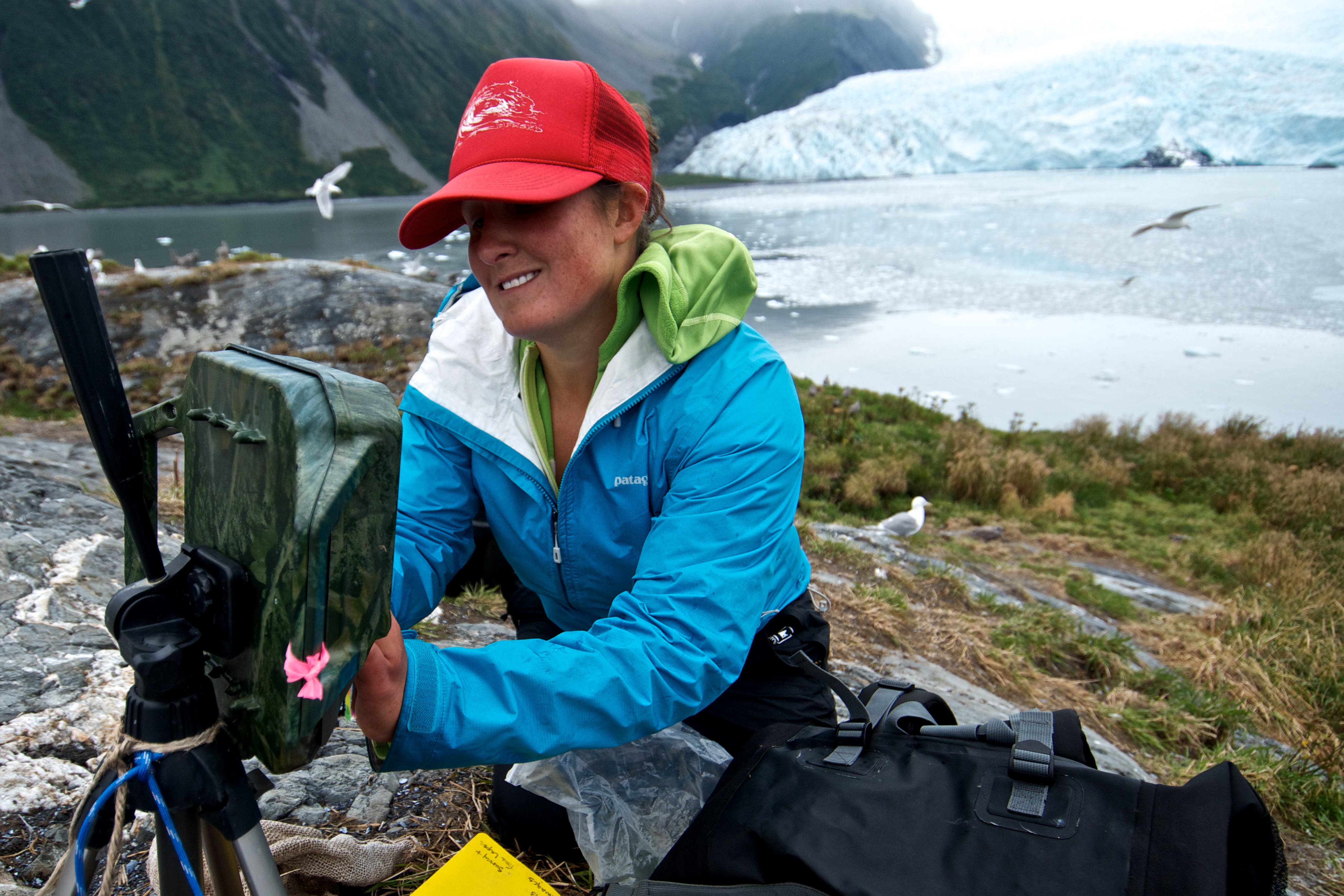
Engineer
